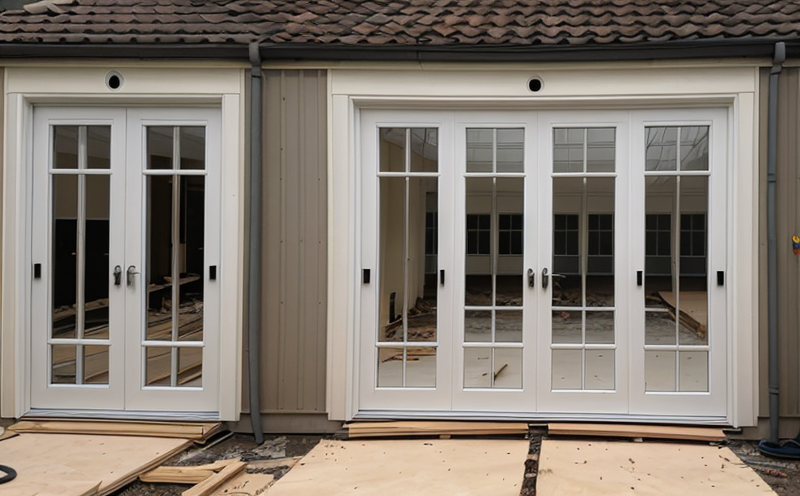Fire Endurance Testing of Composite Doors
In today's world, fire safety is a paramount concern in residential and commercial buildings. Understanding and meeting stringent fire protection standards can significantly enhance the safety and peace of mind for building occupants. One crucial aspect of fire safety testing involves composite doors, which are increasingly popular due to their aesthetic appeal and insulation properties. This service focuses on the comprehensive evaluation of these doors' resistance under fire exposure conditions.
Fire endurance testing ensures that doors can withstand intense heat and flames long enough for people to safely evacuate a building or prevent smoke and flames from spreading further. The test subjects the door to controlled fire exposure, simulating real-world fire scenarios. This service is particularly important in sectors like residential construction, commercial buildings, healthcare facilities, and educational institutions where safety is non-negotiable.
The testing process involves precise preparation of the composite door sample according to international standards such as EN 1634-2:2017. The specimen must be representative of the doors expected in a real-world application environment. This includes considering factors like the type and thickness of materials used, any additional features (e.g., glass inserts, decorative elements), and how these might affect performance during fire exposure.
The testing apparatus typically consists of a furnace that can simulate different levels of heat intensity and duration. The door is placed within this controlled environment where it undergoes exposure to temperatures ranging from 750°C up to 1200°C, depending on the standard being followed (e.g., EN 1634-2:2017). It is important to note that these temperatures are far higher than those encountered in normal use but are necessary for assessing the door's fire resistance capabilities.
During testing, various parameters are monitored continuously. These include temperature rise on both sides of the door, smoke production, and structural integrity. Structural integrity refers to whether the door remains intact or allows penetration after exposure. Compliance with specified performance criteria is essential; otherwise, it indicates that further improvements may be needed in design or materials.
The results from this testing are detailed in a comprehensive report which provides clear evidence regarding how well the composite door performed under fire conditions. This information can then be used by architects, builders, and other stakeholders to make informed decisions about selecting appropriate building materials that meet necessary regulatory requirements.
By investing in thorough fire endurance testing of composite doors, organizations demonstrate their commitment to public safety and compliance with relevant regulations. Such tests help ensure that buildings are safer places for everyone involved—from construction workers on site to tenants living within them. Additionally, successful outcomes can enhance brand reputation and trust among clients who rely on these products.
Benefits
- Enhanced Safety: Ensures that doors meet strict fire safety standards, providing added protection in critical situations.
- Regulatory Compliance: Helps building owners and contractors stay compliant with local regulations and codes.
- Improved Reputation: Demonstrates a commitment to public safety which enhances your organization’s reputation.
- Cost Savings: Identifies potential issues early, preventing costly redesigns or reworks later in the project lifecycle.





